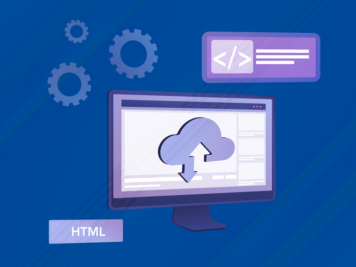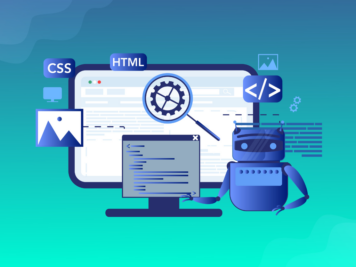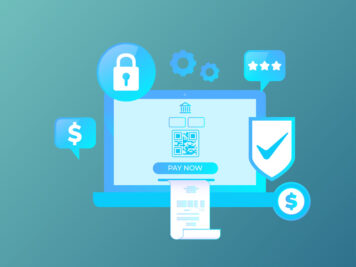Demand for software development outsourcing has grown higher than ever: About 81% of companies report that they are experiencing a shortage of skilled tech workers [EY and iMocha report]. This challenge, coupled with rapid advances in generative AI, is forcing tech leaders to reevaluate their business strategies. About 65% of tech CEOs realize the need to act on generative AI or else risk being left behind.
Rapid change has CTOs, product managers, and entrepreneurs asking not if they should adapt, but how. It’s a tricky balancing act. Leaders have two responsibilities: Focusing on core business objectives and managing the technical side of product development all while scaling at speed and keeping costs under control.
Outsourcing is a strategic and not an operational decision. Cost reduction, while still a priority for many, is no longer the solo driver. Outsourcing creates scope for innovation. By tapping into global talent pool and using automation and analytics, companies can forge partnerships that are less about transactions and more about innovation. In doing so, they create the space for themselves to focus on what truly matters, i.e. growing their business.
Why are companies turning to software development outsourcing
Global competition demands constant innovation, but innovation requires significant resources: time, expertise, and skilled personnel. This creates a dilemma for CTOs and product managers: they need to build and deliver new products fast, but their current team might not have the bandwidth or niche expertise required. That’s where software development outsourcing comes into play. By leveraging external talent, companies can offload the technical aspects of product development to skilled professionals, allowing their internal teams to focus on strategy, innovation, and business growth.
Startups, in particular, can benefit from software development outsourcing when developing a Minimum Viable Product (MVP). One of our clients, a leading digital fintech, needed rapid feature expansion but lacked the engineering bandwidth. They teamed up with us to build an extended development team. We helped them develop their core product and launch it on time. As its outcome they secured a skyrocketing user base, multiple funding rounds, and ultimately, unicorn status. Read the full success story here! Outsourcing allows startups to build and test their MVP with minimum upfront investment, which is crucial for securing funding and gauging market interest.
Building your own MVP becomes even easier when you know the right steps. To have a look over what each step involves you can access our 8-step minimum viable product checklist developing a successful startup product.
Are you missing out on these software development outsourcing benefits
Outsourcing software development not only offers immediate relief to overburdened teams, but also offers strategic benefits that can drive long-term success. Here are the key benefits:
Cost efficiency
Deloitte’s 2022 outsourcing survey report suggests that 57% of CEOs choose outsourcing primarily to save on cost. By working with external teams, you can access skilled developers at a lower cost than hiring in-house, leading to overall project cost savings and reducing overhead expenses.
Plus, it will create a win-win situation for you as you won’t have to invest in expensive software development stacks and still make your business both efficient and cost-effective. It further reduces indirect costs by allowing your in-house team to focus on core strengths, freeing them up for strategic, growth-driven efforts.
Access to specialized talent
Outsourcing connects you with AI, blockchain, or machine learning experts, wherever they are. This is especially critical when your product requires niche technical expertise or CTO that might not be available within your current team.
For example, if you are developing an AI-powered product but lack the necessary expertise in-house, outsourcing to a team of AI specialists can help ensure the project is executed successfully. By collaborating with AI experts, you can use their experience and expertise to bring your product to the market faster and more efficiently. This partnership can also help overcome gaps in your team’s technical expertise, resulting in a more robust final product.
One of our clients, a mature U.S.-based SaaS platform in the email marketing domain, was looking to improve email engagement by using AI-generated content. To fill a skills gap in their workforce, they collaborated with our AI experts. We implemented a generative AI solution using ChatGPT and DALL-E to create engaging email content and eye-catching visuals. The results were impressive. Existing clients praised the new email format and generated strong interest from potential customers. By working with our AI expertise, our client was able to effectively adopt an AI-based solution that improved their product and boosted the company’s development.
Improved time-to-market
Developing a product or application takes time and varies depending on the scale of the project and its complexity. While simple applications can take a few months, building a complex platform with ML or AI implementation can take time. Outsourcing offers companies the ability to bring products to market faster by accessing a pool of skilled developers who can start a project and begin working immediately.
This happened with a health insurance client who approached us to build a life insurance policy administration system from scratch. With their team stretched thin, they needed a tech partner to execute their vision on a tight timeline. In collaboration with their SMEs, we delivered the first version in just 4 months, enabling them to swiftly meet market demands and highlighting the speed and quality outsourcing can provide.
Flexible staffing without overhead
Another major benefit of software development outsourcing is the ability to scale up or down as needed. This flexibility is essential, especially when launching a new product or entering a growth phase.
With outsourcing, you’re not tied to the long-term costs of hiring and onboarding full-time employees. Instead, you can add resources when you need them and cut back when you don’t – allowing you to stay agile and cost-effective.
Innovation and technology advantage
Staying ahead of your peers requires heavy investment in the latest innovations and technology. Whether you talk about developing native app applications, cross-platform applications, or exploring areas like wearables, AR/VR, upgrading your app with advanced technology brings in experts and the latest tools for thorough testing.
Using the latest tech stack is essential, and outsourcing is a smart way to access it. With outsourcing, you gain skilled developers and modern technologies like AI and automation, making your projects more appealing to clients and investors.
Common software development outsourcing challenges – and how to overcome them
Outsourcing has challenges too. Many CEOs and project managers view outsourcing as risky due to fear of losing control over the project, handling security/confidentiality concerns, dealing with time zone differences, or encountering communication barriers. However, with the right approach, these challenges can be mitigated.
Fear of losing control
The fear arises from the uncertainty of relying on an external team for a critical part of their business, often making owners feel they’re losing control over quality and timelines.
The key to overcoming this fear is to maintain open communication from day one. Set clear expectations, define measurable milestones, and establish regular check-ins to ensure the project stays on track. Additionally, appoint a point of contact (POC) to facilitate consistent communication and manage any issues that arise, providing reassurance and maintaining control over the process.
Handling security and confidentiality concerns
When you share your ideas and data with a software development outsourcing partner, there is a risk that they might misuse that information, risking data breaches. To stay safe, always research about vendors through legit online platforms like Clutch, G2, etc. Clearly, state penalties and legal repercussions are involved in breaking agreements. Also, include intellectual property rights in your agreement to protect your ideas against copyright issues.
Remember, both parties have the right to legal protection, and if you hire a good outsourcing partner, they will use agreements like NDAs and general agreements for extra safety. This will increase the security of your data.
Communication and time zone differences
Communication gaps, particularly when working across different time zones, are another common challenge. It becomes even more challenging if the outsourced team does not know your company’s culture, communication style, or how you like to work together. This can result in poor product quality, misaligned expectations, and dissatisfaction on both ends.
To mitigate this, many companies adopt a “” follow –the-sun”” approach where teams in different time zones work in a continuous cycle, ensuring round-the-clock progress. Additionally, using collaboration tools like Slack, Zoom, and Jira helps keep communication transparent and efficient. You can even set clear language guidelines for the POC. This will make communication smoother among team members and help avoid any sort of misunderstandings.
Managing quality and delivery timelines
It is not always easy to make sure the code and documents the external team creates meet standards. Also, it is harder to force outsourced developers to adhere to the quality standards than it is when you work with in-house developers.
To overcome this challenge, you can conduct thorough research before agreeing to anything. Look for companies that have a reputation for hiring top-tier talent, as this can significantly impact the quality and early delivery of your project.
Explain clearly what you expect and involve a Quality Assurance tester in verifying the quality of the codebase. Also, ask the team to share their code on developer platforms like GitHub regularly so mistakes can be fixed quickly. This way, you can easily manage both the quality and delivery timelines of your software project.
When should you outsource? A decision matrix for leaders
Knowing when to outsource is as important as knowing how to outsource. Timing is everything, and a well-structured decision matrix can guide CTOs, CEOs, product managers, and entrepreneurs in making informed choices.
Below is matrix featuring key question to consider:
| Key Question | Importance | Yes | No |
| Do we have the in-house resources to meet this project’s deadlines? | High | Utilize current resources | Outsource to meet deadlines |
| Does the project require technical expertise we don’t currently have? | High | Outsource for expertise | Proceed with internal team |
| Will outsourcing free up my internal team to focus on core business functions? | Medium | Consider Outsourcing | Assess internal workload |
| Is the cost of outsourcing justified by the projected benefits? | Medium | Evaluate potential ROI | Reassess project scope |
| Is there a reliable outsourcing partner with a good reputation available? | Low | Partner with them | Search for alternatives |
Consider each criterion or the demands of the project. Software development outsourcing may be a wise choice if most of your requirements say yes to outsourcing. If the results are inconsistent, determine which aspects are most important to your company and adjust your strategy accordingly.
How to choose the right outsourcing partner
Choosing the right software development outsourcing partner is perhaps the most critical decision in this process. The wrong partner can derail a project, while the right one can become a long-term collaborator in your company’s growth. This makes choosing wisely not just a business decision but a strategic one.
Start by evaluating the partner’s technical expertise
You need a team that understands the complexities of your project, has industry experience, and can provide the technical skills you don’t have in-house. Don’t just look at surface-level credentials; dig deeper into their portfolio. Have they successfully tackled projects similar to yours? Do they have a strong track record in delivering complex products on time and within budget?
While price is important, reduced cost doesn’t always mean high quality. Going with the cheapest option can come with a hidden cost: lack of knowledge, poor communication, or poor delivery. In reality, an overemphasis on cost-cutting usually results in higher costs in the long run: fixing errors, managing delays, or redoing substandard work.
The real value of software development outsourcing is not just in savings, but in choosing a partner whose technical competence matches your business requirements. Experience should always take precedence over cost. A competent and experienced team can complete complicated tasks more effectively and deliver higher quality work that meets or exceeds your expectations.
Consider the culture fit
Lack of alignment in work culture or communication styles can impede collaboration, no matter how competent the team is. Look for partners who not only understand your company’s goals but also mirror your values. It’s critical to have clear and transparent communication from the start. Your partner should be able to effortlessly integrate with your internal team, adhere to your process, and keep everyone in sync, regardless of geographic or time zone variations.
Weight heavily on transparency
You need a partner that is transparent about their operations, from pricing models to development methods. Establishing clear project timelines, code ownership, and intellectual property rights from the start is critical. Make sure you have strong legal agreements in place, such as confidentiality agreements and intellectual property restrictions, to ensure you are protected on all fronts.
Think long-term
Software development outsourcing is not just a one-off project solution. A good outsourcing partner can evolve into a collaborator who grows with your company, providing the flexibility to scale up and down as your needs change. Keep the bigger picture in mind: you’re looking for more than just technical skills; you are seeking a partner who can contribute to your company’s innovation and success over time.
Think of your outsourcing partner as a long-term collaborator, not just a short-term fix. For example, one of our clients chose to partner with us because we offered a comprehensive engineering solution. They could rely on us to meet all their engineering needs, eliminating the hassle of searching for individual services or skillset. Check what our client has to say about us
““With Talentica, you get your engineering solution in one place. You can depend on them as you would depend on a family member. It allows you to be confident that all your engineering team needs will be met and grow in one space as opposed to trying to find them (solutions) with individual services or individual skill sets of people from the outside.”
Want to know more about why our customers value us? Hear it directly from them.
Conclusion
Software development outsourcing has evolved far beyond a cost-cutting strategy. CTOs, product managers, and entrepreneurs use it as a strategic tool to accelerate innovation, scale growth, and stay ahead in a competitive marketplace.
If you’re ready to explore how outsourcing can fit into your growth plans, let’s talk.









